by GardenLover | Apr 1, 2015 | Special Topic
Simple Techniques to Reap Early Rewards
In my part of the Midwest, planting potatoes, peas and other cold-tolerant vegetables on St. Patrick’s Day is a garden tradition best kept in the breaking. Usually, it’s way too cold and wet.
So imagine my delight from digging potatoes and snipping a few tiny, tender collard and Asian greens on St. Patrick’s Day.
Boasting boosted agriculture
Some of you probably have even better harvests to brag about, after all, bragging is a somewhat shameful but timeless element of gardening. I suspect one reason agriculture caught on with our paleo-forefathers may have been one-upping each other on the size and flavor of prehistoric veggies. Flowers might have factored in as well, assuming our paleo-foremothers were as delighted with a bunch of blossoms in a man’s hands as many women are today.
Times change but not bragging rights. Producing the first tomato of the summer prompts incredible antics by some growers: choosing Early Girl or other can’t-wait-to-set-fruit varieties, coddling seedlings under grow lights, using mini greenhouses, and muttering mystical chants passed down from those first gardeners.
Enough about chest thumping. In the case of my potatoes, they aren’t the first of the season but the last of last season.
Secrets of success
My approach is a mix of old and new. Grandpa Leach once described to me the vegetable pit on the hard-scrabble farm of his childhood. My memory isn’t clear on details, but the pit was something of an outdoor root cellar lined with straw. The vegetables were placed in layers and covered with straw and soil. Supposedly root veggies, cabbages, potatoes and some fruit stayed fresh in the cold, moist conditions. They dug food throughout the winter. (No small thing, considering the tales I heard of about walking to school through 4-feet deep snow from November through March.)
Being lazy, I skipped the excavation. I even skipped digging potatoes, which don’t keep very long in my cellar. Instead, mulch was piled thickly over the potato bed. A lot more mulch was needed this bitter winter — about half the potatoes dug St. Patrick’s Day were partly to totally mushy. The rest, however, are unscathed and delicious, as only home-grown Yukon Golds can be.
The collard greens were sown Aug. 15 and grew to micro-green size before serious cold weather arrived in early November. Immediately after seed planting, I secured floating row covers over the beds.
Protection service
Designed to thwart insects from accessing the greens, the row covers serve as something of a windbreak. I discovered this by accident a few years ago when I was too lazy to remove it after winter arrived. Even in the horrid winter of 2014, I picked a few leaves of collards and kale on St. Patrick’s Day. In milder winters, various greens can be picked all season, though growth slows to zip from mid-November to mid-February.
Can you top this?
Besides greens, I discovered the carrots, planted in late summer (tag is missing), came through just fine under the row cover. A couple dug on March 30 were sweet and crisp.
OK, that’s my story. What’s yours? Surely someone can top all this.
Inspiring ideas
For more inspiration about year-round harvests check out www.fourseasonfarm.com, site of Eliot Coleman’s Maine vegetable farm that uses no heated greenhouses.
by GardenLover | Jan 20, 2015 | Special Topic
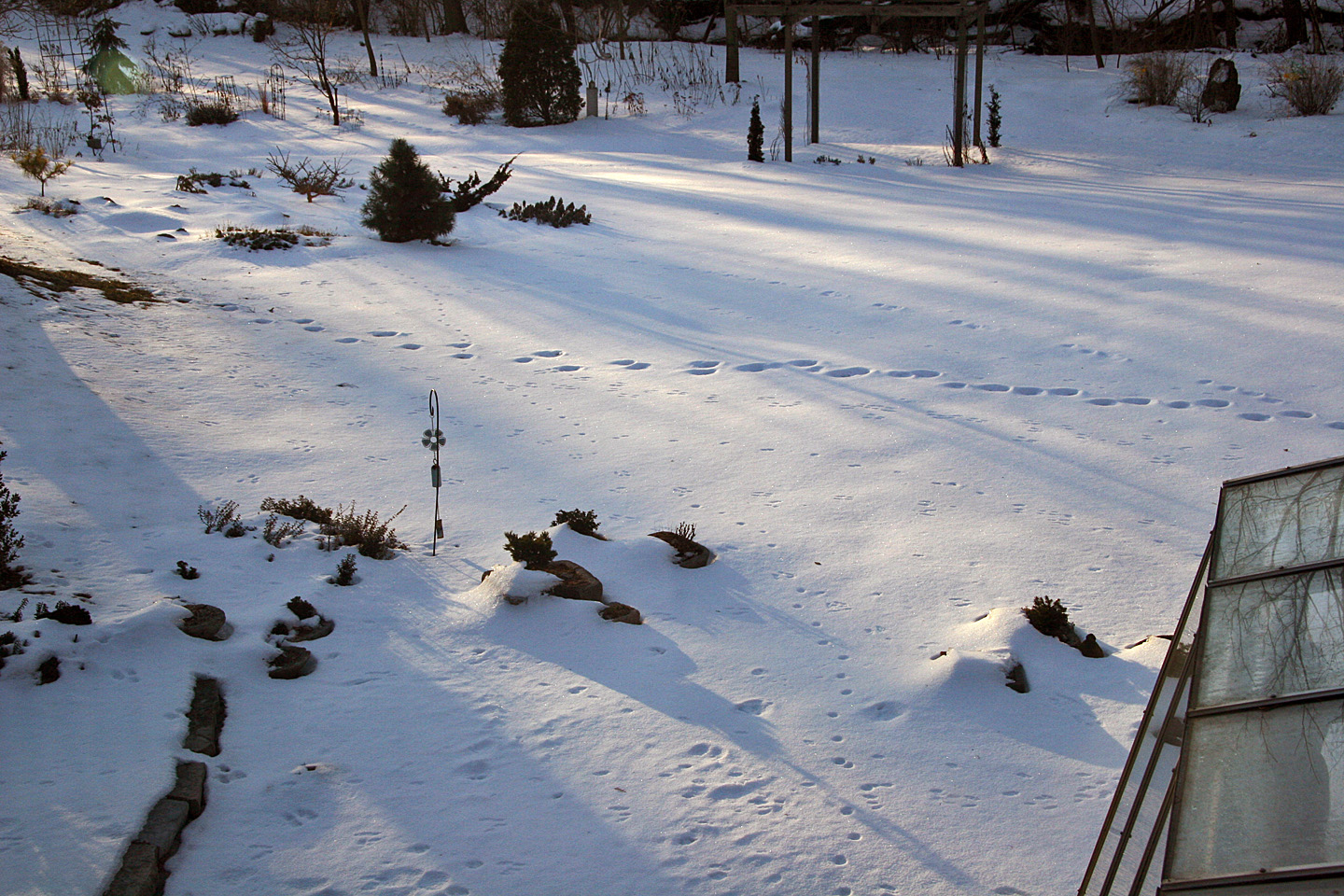 Finding ways to celebrate a difficult season
Finding ways to celebrate a difficult season
By Michael Leach
Winter sun turns a snowy lawn into a giant geography map. At least it seems so to me. My imagination transforms the shadow of a gnarly old tree into the Nile Delta. On the flip side, it could be the tributaries of the Mississippi River. Sometimes I imagine the snow is a sea dotted with islands (footprints). Sled tracks suggest railway lines running hither, thither.
Those pale blue shadows of shrubs, poles, fences and more on a brilliant sunny day make an abstract pastel watercolor sliding silently, imperceptibly across the whiteness.
And on a full-moon night comes a jaw-dropping view from the bedroom window upstairs. Deltas, islands, roadways, all faintly visible in the silvery glow.
Is cabin fever getting the best of me? Is it time for a change of scenery? Possibly, but I prefer thinking of this coping tactic as a way of making winter — my least favorite season — a more pleasant time. These and other little mind games help me look forward to more than the rest that dormancy and bitter weather force me to accept. Perhaps you, too, find reasons to welcome winter.
Because winter sun is rare in my part of the Midwest, any appearance is cause for excitement.
Tree leaves, not to mention frequent haze, obscure sunrise and sunset in summer, when the sun is taken for granted and sometimes cursed. In barren winter, things are different. The first sliver of orange disk can be seen through distant trees as I gaze from that bedroom window, a mug of steaming coffee in hand.
Some evenings, depending on weather, I walk in a nearby park, one on the edge of open farm fields. The sun reverses itself. Sliding silently behind bare trees on the horizon, the sun ripens into an ever-larger orange oval. For a moment or two, the distant woods seem to be aflame. Then only an ebbing campfire burns before the sky darkens.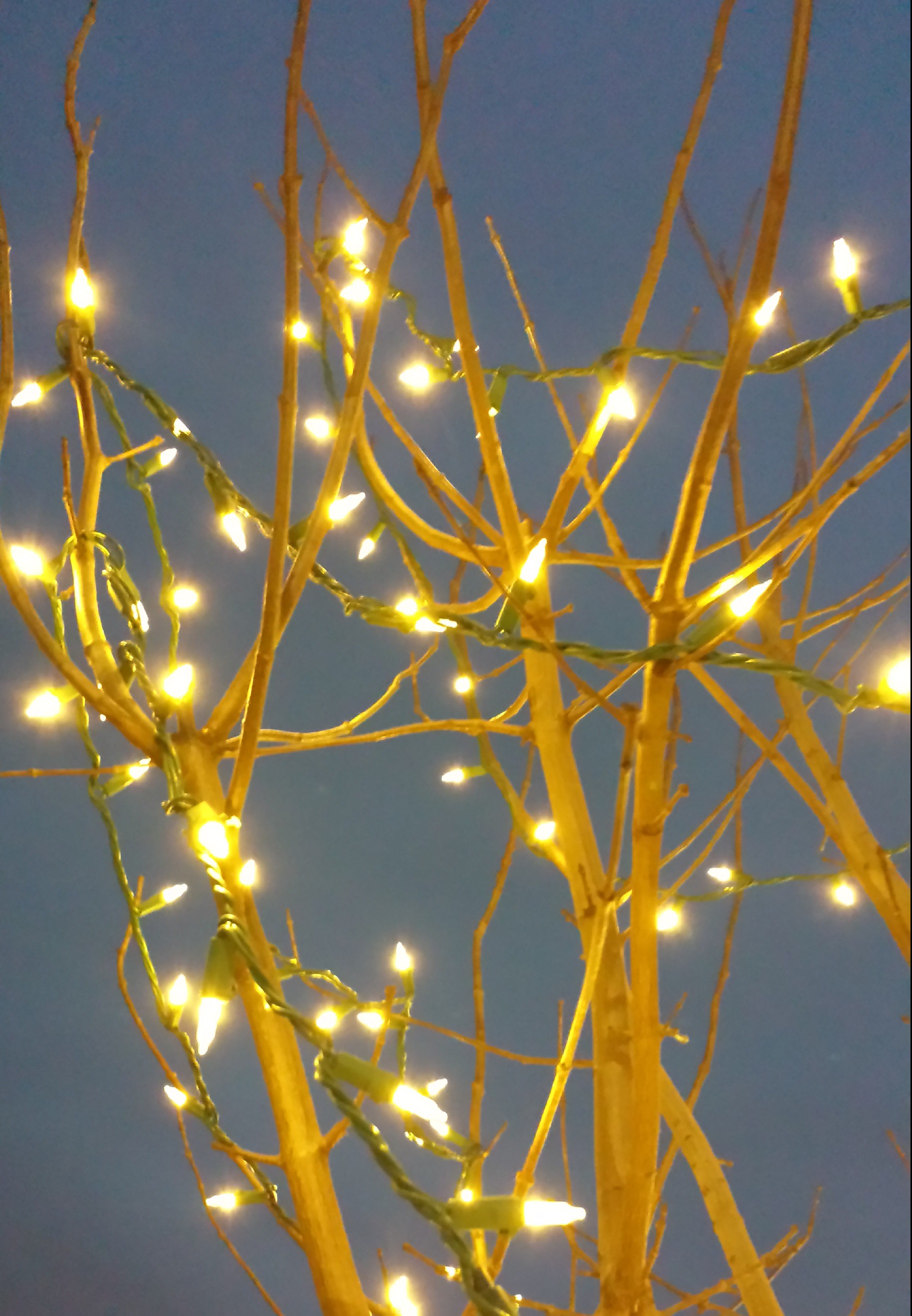
Because cloudy skies are the norm, I decided to “celebrate” winter a few years ago by stringing white Christmas lights on a volunteer cedar I see from the kitchen sink window. Suddenly winter sparkled with a festive air. The little tree is especially handsome mantled with snow. A greeting card I send to myself.
by GardenLover | Nov 22, 2014 | Special Topic
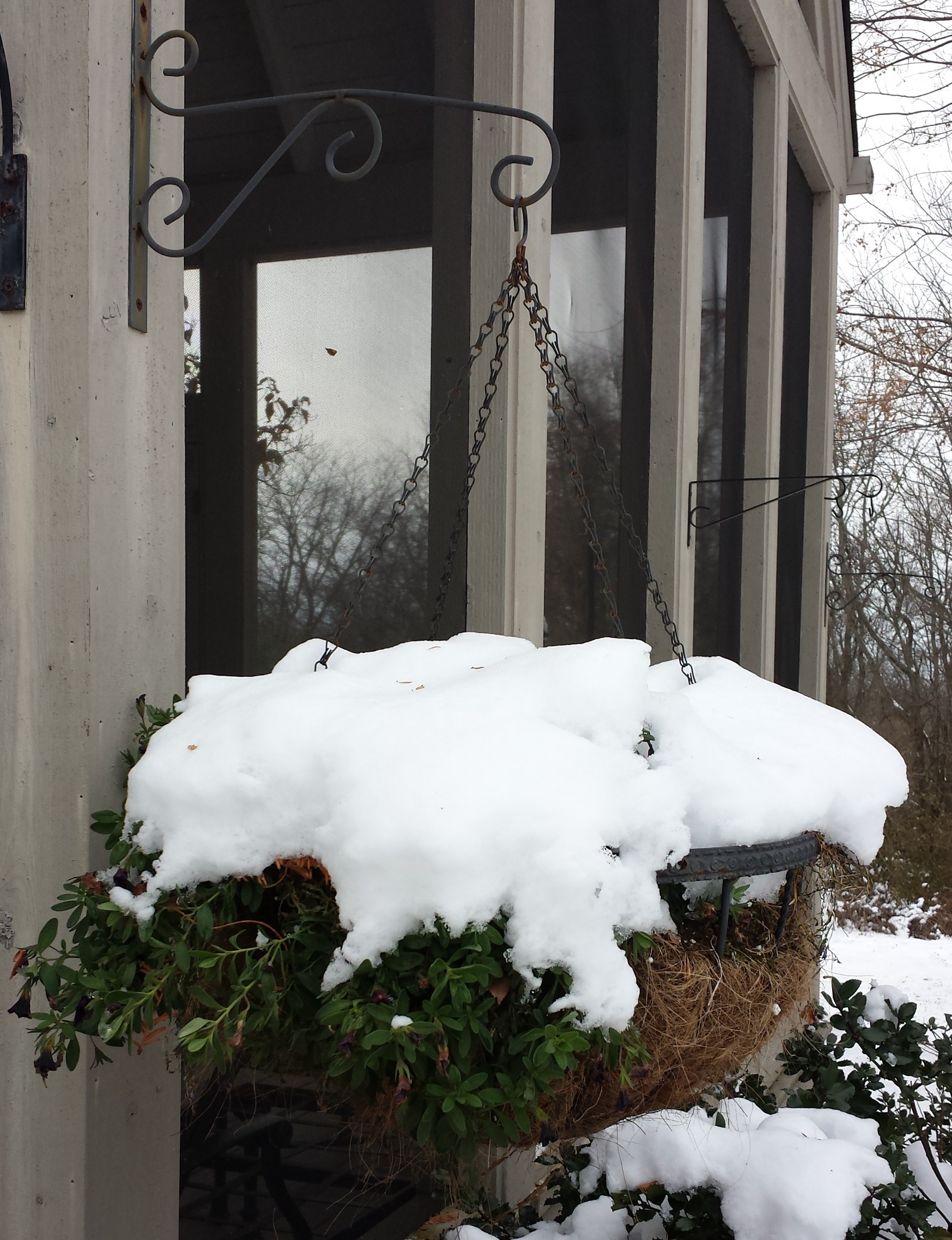 Don’t Fret! Think about what you accomplished.
Don’t Fret! Think about what you accomplished.
By Michael Leach
Even as the last leaves cling stubbornly to the trees, snowflakes twirl to the ground. Ah the mixture of seasonal icons that is November, one day autumn, the next winter, sometimes both in the same 24 hours.
Indoors the winter “look” is back, as the houseplants, gathered from their summering grounds on porch and in the garden, recover from their sulk of yellow leaves. As they find a new equilibrium, so shall I. Soon their green leaves and occasional blooms will be pleasant reminders that the gray world beyond the windows will awaken — eventually — from dormancy.
For now, however, the fatigue of a long, challenging growing season makes me more weary than usual at this time of year. A summer of seemingly endless weeding, mowing and trimming back has me thinking nothing new and fresh happened. But a few moments of recollection show this is wrong in several ways. I’m actually ahead on a few projects and you probably are too.
For instance, in the last, desperate acts of cleanup and shut down before the snow, I managed to scrub the pair of recycled-plastic Adirondack chairs to a reasonable whiteness. Instead of dragging out dingy, grayish furniture next spring, they’ll look almost new. Never done that before.
Then there’s the waterlily. Growing in small pool, this plant is perhaps a half century old. Hmm, when was it last repotted? Reagan may have been president. An undemanding plant to say the least.

Hardy pink waterlily from Lilypons
Its ability to remain so long in the same quarters was due to the gradual transformation of the pool area into a deep shade alcove. A mere sprig of bamboo turned into walls and partial ceiling of dense privacy. (Bamboo was a less than perfect solution to screening the unsightly mess of dented cars and attendant debris at the auto body shop that went in next door. Over the years, the business cleaned up its act considerably, while the bamboo continued to grow ever more thuggish.) By the time I hired a crew in the spring of 2013 to cut down a swath bordering the pool, barely enough light penetrated to produce a handful of pitifully small lily “pads” each summer.
Suddenly sunlight poured in much of the day and the grateful lily bloomed repeatedly last summer and again this year. Not surprisingly, the plant outgrew its venerable clay pot. Instead of waiting until frenetic spring 2015, repotting was one of several chores tackled on a busy September afternoon. Viola! I was done with that.
Another revival. Among the bamboo stumps a semi-sunny border is developing. A flat of wee perennials, a few transplanted hostas and three baby variegated red twig dogwoods were 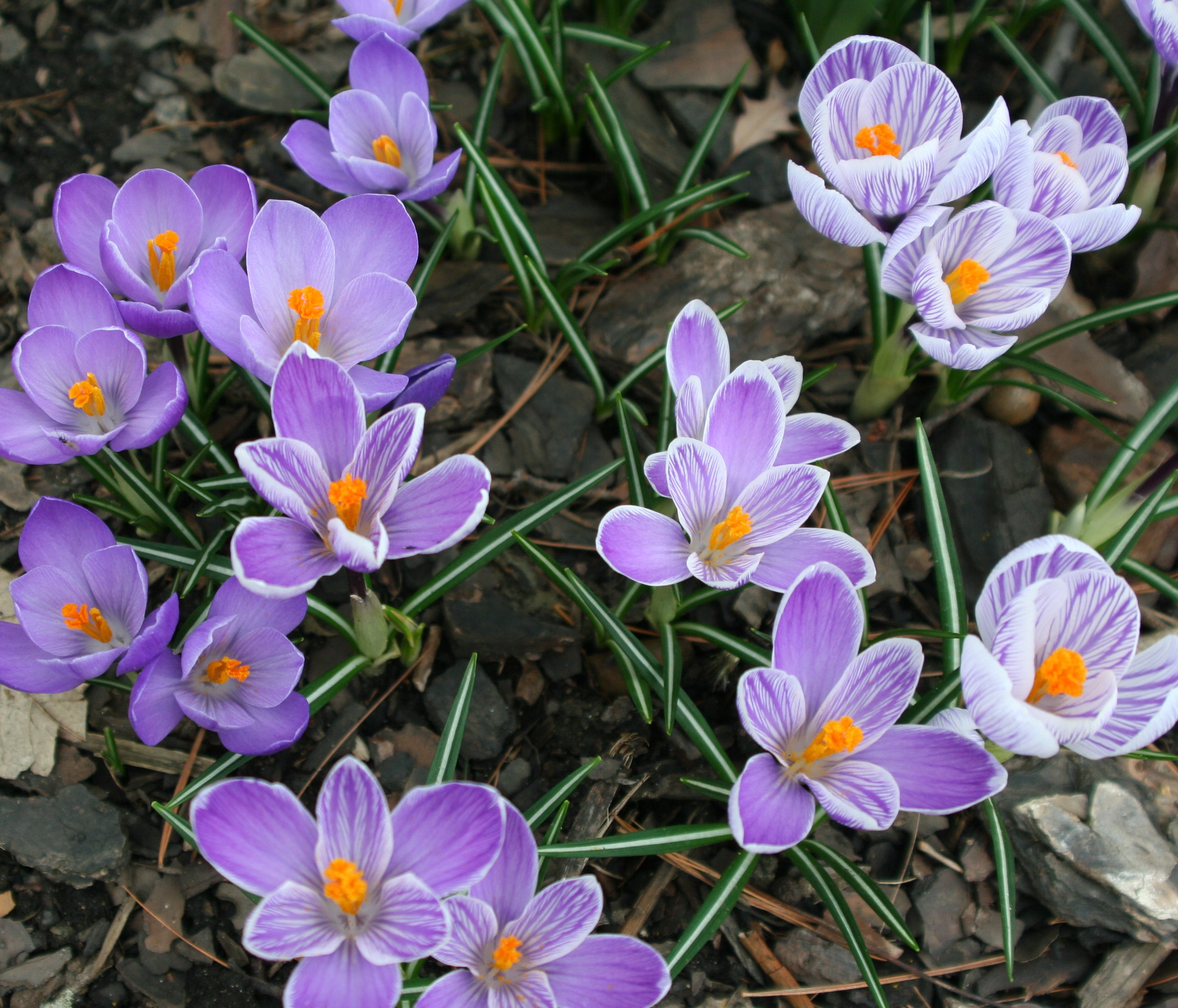 wedged in amongst old bamboo roots, the rebar of the plant world. The newbies are all mulched for winter. I’m done with that.
wedged in amongst old bamboo roots, the rebar of the plant world. The newbies are all mulched for winter. I’m done with that.
I’m also done with the fall planting, which included a paltry 200 or so spring bulbs, a flat of pansies that should survive winter for early color and a half dozen or so small shrubs.
There’s more to do this fall, weather permitting, as always. But why fret and stew about an incomplete to-do list when there’s so much to take pleasure in having accomplished? I’m done with that. And I hope you are, too.
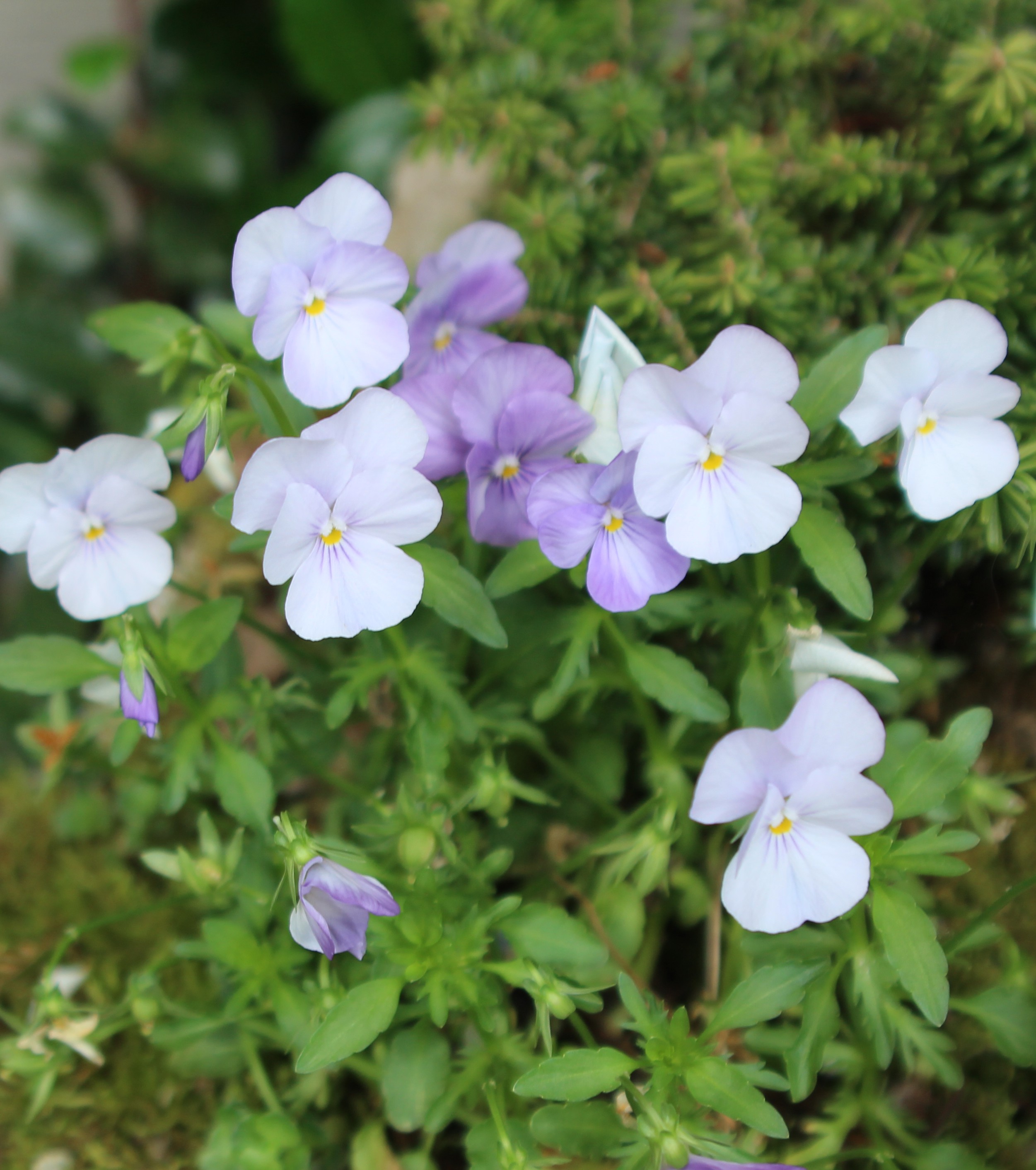 Share your “done with its”. What accomplishments are you taking pride in? Please tell us.
Share your “done with its”. What accomplishments are you taking pride in? Please tell us.
by GardenLover | Nov 2, 2014 | Special Topic
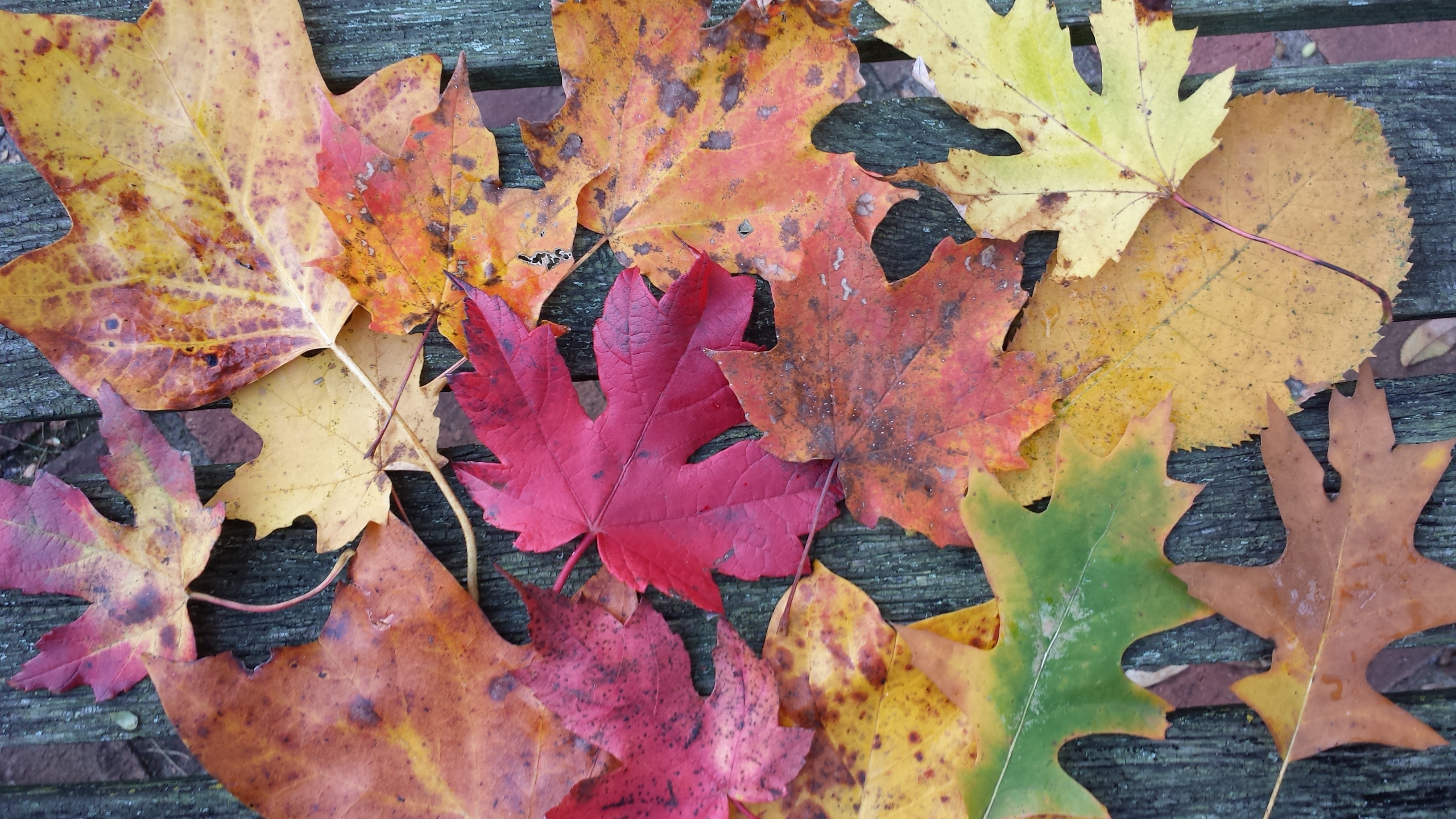 Ways to make autumn leaves more eco-friendly
Ways to make autumn leaves more eco-friendly
By Michael Leach
Cackle, crunch, crackle, crunch go the footfalls of autumn walks through dry leaves that smell pleasantly of faded summer days.
Savvy gardeners, who know that leaves are easily recycled into a free mulch and soil amendment, aren’t likely to bag their leaves and put them at the curb, much less rake them into the gutter to await collection.
However, those who shun nature’s gift and relegate leaves to the gutter are creating environmental issues.
Gutters filled with leaves “… impede the flow of rainwater to the nearest storm drain, creating puddles where mosquitoes can breed,” says the Franklin Soil and Water Conservation District in Columbus in a recent newsletter. (Despite the autumn chill, I guess we shouldn’t underestimate the power of mosquitoes to reproduce.)
“When the leaves are blown by wind or carried by rainwater to the storm drain,” the report adds, “they clog at the catch basin and form an impenetrable mat on the grate. This causes street flooding and the extra expense of calling out municipal or township employees to clean it.
“When leaves travel through the storm water system to the nearest stream, they contribute to oxygen depletion as they decompose.”
The district suggests keeping leaf piles out of the street to await vacuuming. If your community offers curbside yard waste recycling, put leaves in cans marked “yard waste” or in paper leaf bags.
“Yard waste” is such a misnomer for this valuable resource. Despite having to deal with leaves from a dozen or so large shade trees, including several mature sugar maples, I don’t consider leaves waste.
Besides putting them to work in the landscape, this year I’m putting some into plastic trash bags to insulate carrots and turnips. I’m hoping to keep the soil cold but not frozen, making harvest in dead of winter a possibility. Stay tuned for further developments on this front.
BTW, what’s your favorite uses for leaves?
by GardenLover | Sep 30, 2014 | Special Topic
 By Michael Leach
By Michael Leach
I want to knock the cell phone out of her hand and shout, “Look around you!”
Instead, I roll my eyes and grind my teeth. The woman, who’s touring an elegant private garden as part of the recent Garden Writers Association’s Pittsburgh symposium, hunches over a cellphone. She’s oblivious to the tranquil water lotus pool and gnarly trunks of the ancient espaliered apple trees.
Why would anyone, but presumably someone who writes about gardens and cultivates one, spend precious time texting, or sending Facebook updates in a place she may never see again? (To be fair, she may be taking notes or a few photos for future use.)
But she’s probably ODD, suffering from what I term obsessive digital disorder, just like millions of others. I define this as the need to constantly manipulate images on a digital screen, whether games, social media, texts, TVs, cell phones, pads, laptops, smart watches and other devices. ODD people are addicted to the constant diversion that digital “hits” offer.
These devices are incredibly helpful and fun, but how does one avoid addiction to endless diversion? I ponder this danger, while planning an upgrade to a smart phone and all that entails.
Before ranting further, a disclaimer is in order. My view is clouded by decades of writing and editing on a computer. I’m conditioned to being paid for screen time. Forgive me if I prefer face time to Face Book and shy from games to pass idle hours. I played one too many high-stakes game of producing a newspaper despite techno-glitches to find pleasure in antics of the Mario Brothers or killing-spree combat games.
Add to this a gift for causing electronics to manifest peculiar behavior that inevitably prompts the tech-savvy person to exclaim, “I’ve never seen it do that before!” Third, I’m slow to pick up on new stuff, even when it functions perfectly. (Lazy may be a better explanation.)
Now back to digital diversion — New Age nicotine. More addictive than smoking but uber socially acceptable, digital diversion is a must for everyone, starting with the youngest children. Advice I hear for learning new electronic tricks is, “Get a kid to show you how.” Smoking was the other way around.
So how much New Age nicotine is safe for consumption? Who knows? Before having a home computer, my only email came to the office downtown. Did I drive almost 20 miles round trip on Saturday afternoon to check email? Never. But when it comes to a phone that you must also use for nonbusiness calls, it’s hard to avoid the temptation of diversion at your fingertips.
I need space between work and life. That’s hard to find these days.
As I recall the phone addict in the garden, I wonder if she attended a symposium program that cited scientific studies quantifying the positive effects of gardening, plants and nature upon blood pressure, productivity, sense of well being and recovery from surgery. Maybe she skipped that session or more likely — she Tweeted through it.
Let us know: In this smartphone age, do you live it or record it?
by GardenLover | Sep 21, 2014 | Special Topic
By Michael Leach
His return is as unwelcome as the drop-in visit of a difficult in-law, but instead of a few hours, he hangs around for several months. Still, there’s no keeping him away. Punctual as a Japanese bullet train, the constellation of Orion returns to the pre-dawn sky in late summer.
Ancient myth says this hunter eternally pursues “doves” (the constellation called the Pleiades), who are always just out of Orion’s reach. For me, he’s chasing away summer and dragging in winter.
His ascent in late summer foretells the end of sun-warmed tomatoes, barefoot walks in dewy grass, and idling upon the patio until stars and fireflies twinkle in the almost endless summer twilights. Because summer has been mild, often cloudy and sometimes autumnal in my part of the Midwest, it hardly seems as if there’s been any at all. Thus, spotting Orion on the morning of Aug. 26 made my heart sink farther than usual.
Despite the inevitable, one can live in blissful denial when warm weather lingers after Labor Day, or for that matter, in every warm day between now and Halloween. But the celestial clock ticks on regardless of balmy readings. Winter’s return is only weeks away. In a few months Orion will dominate the icy winter nights with the sparkling brilliance of diamonds scattered upon black velvet.
I try not to think of what lies ahead. Instead, every chance to enjoy the outdoors is taken: eating al fresco meals at the picnic table; reading in a tree-shaded lawn chair, while reveling in the chorus of birds, cicadas and crickets; delighting in bright yellow goldfinches flitting to and fro; and being silly happy with the warmth of sun on chilly afternoons. Soon I’ll be taking walks in woods decorated in colors no paint chip collection rivals.
There are chores — seemingly endless chores — that are part of autumn, too. But those shouldn’t take precedence over savoring what remains of nature’s season of abundance. Ignore the clock and to-do list as often as possible. Steal a few precious moments of warmth to make memories before Orion’s long, chilly stay begins again.









